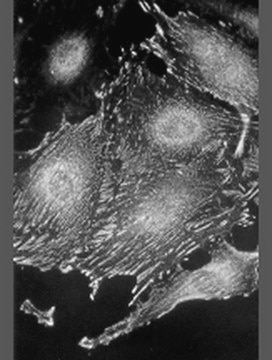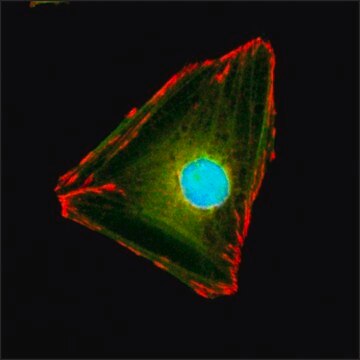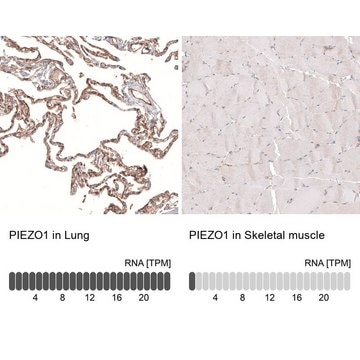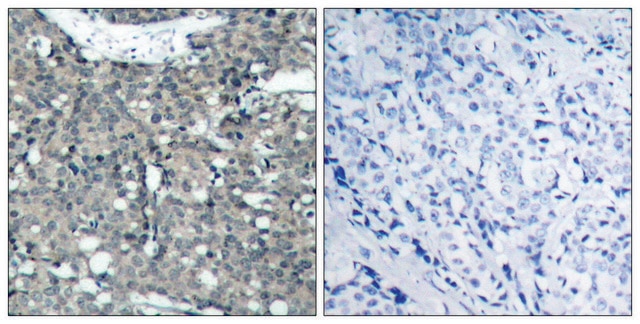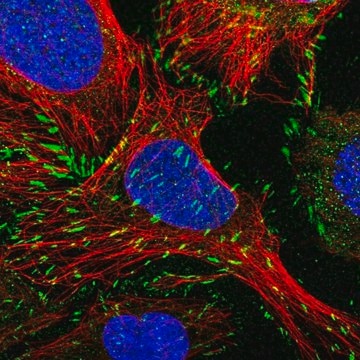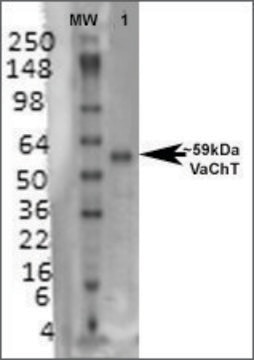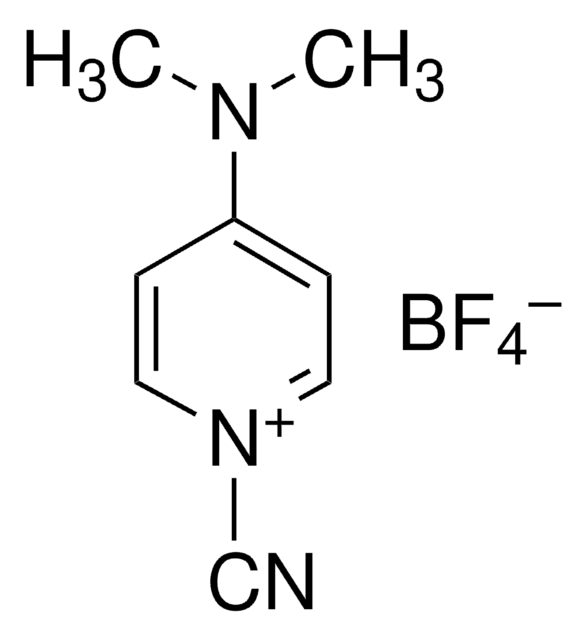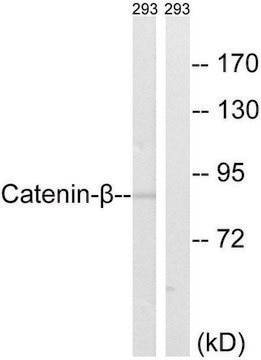MAB3060
Anti-Paxillin Antibody, clone 349
clone 349, Chemicon®, from mouse
Synonym(s):
Anti-AW108311, Anti-AW123232, Anti-Pax
About This Item
Recommended Products
biological source
mouse
Quality Level
antibody form
purified immunoglobulin
antibody product type
primary antibodies
clone
349, monoclonal
species reactivity
rat, human, mouse, canine, chicken
manufacturer/tradename
Chemicon®
technique(s)
ELISA: suitable
immunocytochemistry: suitable
immunohistochemistry: suitable
western blot: suitable
isotype
IgG1
NCBI accession no.
UniProt accession no.
shipped in
wet ice
target post-translational modification
unmodified
Gene Information
human ... PXN(5829)
rat ... Pxn(360820)
Specificity
Immunogen
Application
Signaling
Cytoskeletal Signaling
ELISA
Immunohistochemistry 1:900 in Placenta
Immunocytochemistry
Immunoprecipitation
Optimal working dilutions must be determined by end user.
Linkage
Physical form
Storage and Stability
During shipment, small volumes of product will occasionally become entrapped in the seal of the product vial. For products with volumes of 200 μL or less, we recommend gently tapping the vial on a hard surface or briefly centrifuging the vial in a tabletop centrifuge to dislodge any liquid in the container′s cap.
Analysis Note
POSITIVE CONTROL:
For western blot, load 5-10 μg of whole cell lysate prepared from the human epidermoid carcinoma cell line, A431.
Other Notes
Legal Information
Disclaimer
Not finding the right product?
Try our Product Selector Tool.
wgk_germany
WGK 1
Certificates of Analysis (COA)
Search for Certificates of Analysis (COA) by entering the products Lot/Batch Number. Lot and Batch Numbers can be found on a product’s label following the words ‘Lot’ or ‘Batch’.
Already Own This Product?
Find documentation for the products that you have recently purchased in the Document Library.
Our team of scientists has experience in all areas of research including Life Science, Material Science, Chemical Synthesis, Chromatography, Analytical and many others.
Contact Technical Service